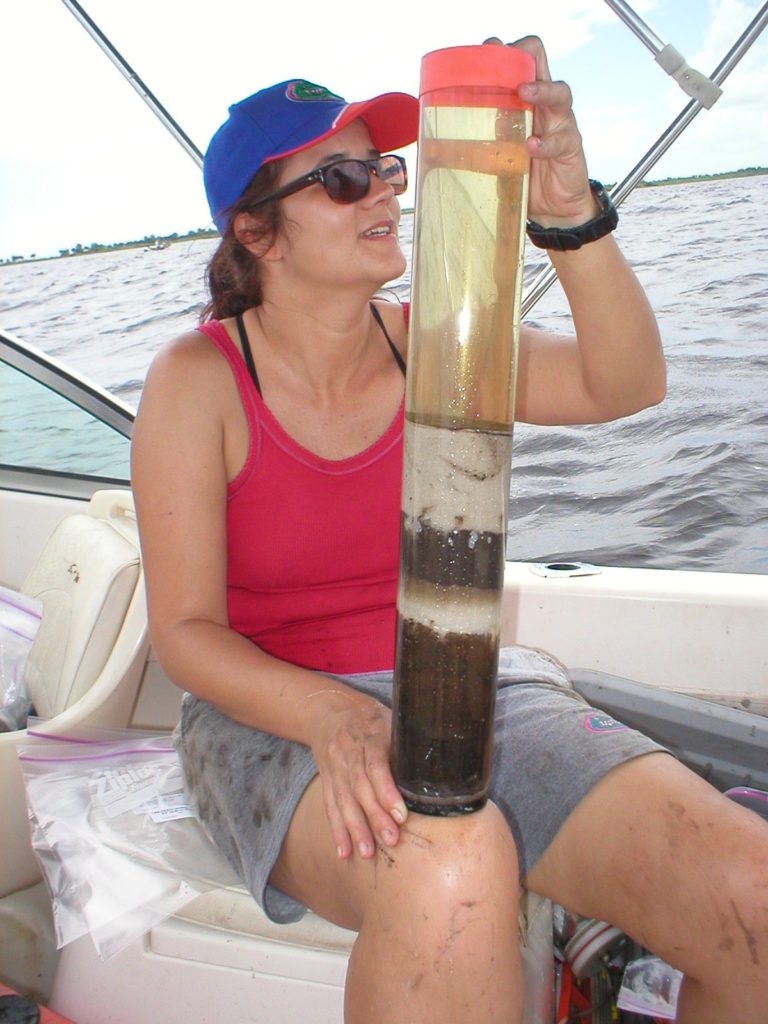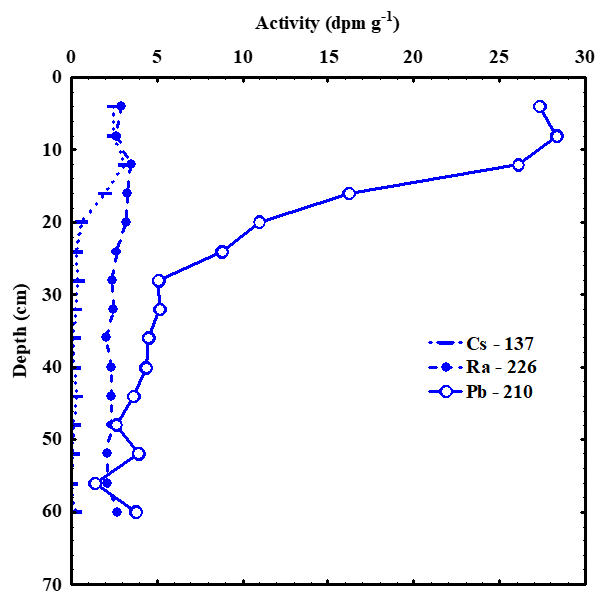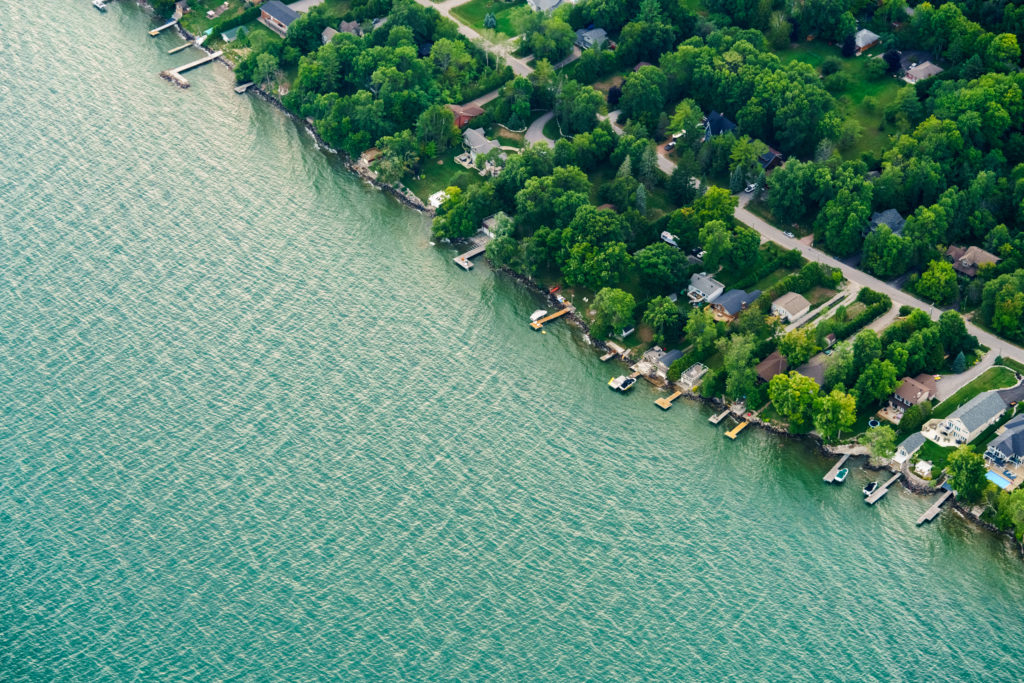By: Isabela Claret Torres, MSc, Ph.D.
Climate change has drastically affected the world’s lakes. Around 97.3% of the water in the world is in the ocean basins, and 2.19% is as ice in glaciers. Groundwater accounts for 0.5% of the water. Only 1.5% is the water contained in the moisture of the soil, atmospheric water vapor and lakes and rivers. Less than 0.02% of the water of the world is found in both freshwater and saline lakes. Freshwater lakes amount to only 0.009% of the water of the planet, and rivers 0.0001% (Cole 1994). These last two are the main source of freshwater for agriculture, industries, general population consumption and recreation. The study of the inland waters is called Limnology.
Limnology
As pointed out by Cole (1994) Limnology is a term difficult to describe in simple words. In 1892 Limnology was described as the “oceanography of lakes”. In simple words Limnology can be described as the study of all inland waters, which may be lakes, rivers, and streams, but also reservoirs, groundwater, and wetlands. These are often freshwater systems, but limnology also includes inland salt and brackish, or slightly salty, waters. It encompasses the physical, chemical, biological study of these bodies of water. Among these topics Limnologists study empirical and applied processes, physical characteristics, chemical processes, ecology among many other topics. And even though oceanography is a more popular and well-known field of study, limnology can reveal many things about the water and the watershed and the earth’s history.
As defined by Wetzel (2001) Liminology is: “the study of the structural and functional interrelationships of organisms of inland waters (both freshwater and saline) as they are affected by their dynamic physical, chemical and biotic environmental”.
Stratification
Lakes can be shallow or deep. Deep lakes go through a process called stratification of the water column. We all felt the stratification of the water column in our life. Have your ever jump in a lake, swimming pool or ocean and the shallow water was warm, and you go deep you feel cold water? So that is it. Water with different temperatures have different densities, being cold water more dense than hot waters. In deep lakes that the top layer (Epilimnion) of the water is warm up by the sun while de deeper part (Hipolimnion) is cold, creating two layers of water with different densities that never mixes. Between these two layers there is the thermocline, which is define as the layer where there is a change in 1o C at each 1 cm of depth (Fig. 1).
It needs the action of climate or the wind to break the stratification and the mixing of the water. This process is very important for the dynamic and lakes metabolism. And this is because the cold deep waters are rich in nutrients and the shallow warm waters are nutrient poor but is where the photosynthesis occurs (Epilimnion). When there is the mixing of the whole column, we can have exponential growth of the phytoplankton community and consequently all the food web. Lakes are classified based on the mixture regimes. They can me monomitic (mix once a year), dimitic (mix twice a year), oligomitic (mixing is irregular and short duration), polymictic (mix many times a year), meromictic (the mixing is not complete) and amitic (never mix).
Shallow lakes never stratify. Or the stratification and the mixing of the layers are a daily process. Being stratified during the day and mixed during the night when the top layer cools down. The average depth of a shallow lake is around 3 meters (Scheffer 2004).

Biological Communities
Many biological communities live inside the lakes. As said before the phytoplankton (or algae) that makes photosynthesis fixing the inorganic carbon and producing oxygen. Second is the zooplankton community that are animals second in the food chain and is composed by a diverse group of organisms (protozoa, rotifers, ostracods, cladocera and copepods). There is the benthic community that lives in the sediment and is represent by many insects’ larvae’s, annelids and mollusks. And there is the nekton, the ones that can swim and control its position in the water column represented by the different species of fisheries.
Other important biological community are the microorganisms, yeast, fungus, bacteria (aerobic and anaerobic), methanogens, which comprehend what is called the microbial loop. This term was coined by Azam et al. (1992) in the study of marine water and showed the importance of the microbial community in the cycling or dissolved organic carbon and as food source for the food chain. And for last but not least there are the aquatic plants.
Microbial Communities
The microbial community is responsible for the decomposition of organic matter. It starts in the water column with the aerobic bacteria and settles down to the sediment and to be decompose by the anaerobes. The sediments are a dynamic compartment of lakes where many process occurs that are important for the whole lake metabolism.

All particles (living or dead) that comes to a lake or is produced within a lake settles down and become integral part of the sediment. Consequently, lakes function as natural traps for particulate matter and associated nutrients. In the sediment as said before these compounds will be break down by the microorganisms become soluble and released to the water column. The sediments keep feeding the lake with nutrients. And these nutrients become available for the upper parts of the lakes due to the mixing of the water column.
While the lake water tells us only about what is happening in that exact moment (a second latter the water can change) of the sampling, the sediments are stable and can tell us the history of the lake and its catchment area. I like to compare the study of the water with taking a picture and the study of the sediment to watching a movie. So, sediments have a lot more to tell us. Sediments are past archives of history of the earth.
Lake Sediments
Lake sediments have been used in the study of many historical patterns that the earth or the watershed went through. And this study is called Paleolimnology. Sediments can be very diverse. In short sediment cores we can study the process in the lake and recent deposits. As you can see in Fig. 2 sediments of lakes can have different layers and each one with its own characteristics and history to tell.
Deep cores (1 meter, 100meters or more) in the other side can tell us history of 100, 1000, and even historical ages like the Precambrian (Fig. 3 and 4). Cores can be sliced in cm layers and analysis can be conducted to tell the whole story of the lake, the watershed, the past climate conditions etc. Cores can tell us the anthropogenic pressures the watershed went through time. The type of vegetation that the area had, past productivity pattern, historical climate conditions, human-induced changes among many other types of information.
Many organisms like diatoms (algae) ostracod, sometimes copepods and cladocerans are fossils found in the sediment that can tell us the history of the lake and its watershed. Polen analysis found in the cores can tells us about the vegetation of surrounding land. Pigments and other biogeochemical and geochemical proxies can tell us about ancient climate conditions, human impacts and other information.
The timing of past events in a basin is based on reliable dating of sediment cores. Sediment dating provides an age/depth relation from which bulk sediment accumulation rates can be calculated (Smeltzer and Swain 1985). The lead-210 (210Pb) technique is used routinely to provide age/depth relation for the last 100-150 years (Appleby et al. 1986). Other method that can date older sediments is the measurement of 14C. There are many other types of dating markers, as 137Cs for recent sediments, and other for much older sediments. The Fig 5 A, B, C brings the dating using the 210Pb technic and the information we can get from sediments for Lake Annie, Florida, USA (Torres 2007).



Figure 5. Results of 210Pb dating of Lake Annie sediments. A) Radioisotope activities (total 210Pb, 226Ra, and 137Cs) versus depth, B) sediment depth vs. age/date, and C) sediment and organic matter accumulation rates vs. age/year. Source: Torres (2007)
We can see from Figure 5A a peak of 137Cs that is found in many lakes in USA and around the world due to the atomic bombs testing in the 50’s and the Chernobyl accident in Ukraine in 1986. Fig. 5B shows the dates for each sediment layer reaching around the year of 1890. And these data together with the measurement of organic and inorganic matter can gives an idea of the accumulation rate though time of the sediments in lake Annie, Florida/USA (Fig 5C)
Lakes in the USA
In the USA, Kingston et al. (1990) used paleoecological analyses of sediments from nine northern Great Lakes states. Lakes reveal small pH changes in seven of these lakes since 1860, four of these being declines. The largest diatom-inferred pH declines of 0.5 pH units were found in Brown Lake and Denton Lake in Wisconsin. Two other lakes with suspected total alkalinity declines (based on an acidification model and on historical water chemistry, respectively), McNearney Lake in Michigan, and Camp 12 Lake in Wisconsin, have not acidified recently according to diatom-inference techniques.
Many of the observed trends of increasing pH are coincident with logging; floristic composition of diatom assemblages also changed coincident with fisheries manipulations in some lakes. Sediment core profiles of Pb, and polycyclic aromatic hydrocarbons provide a record of atmospheric deposition of fossil fuel combustion products beginning around the turn of the century. The response of diatom species to lake water pH in the northern Great Lakes states region is very strong and similar to response in other regions.
Lakes in Australia
Barnnet (1994) publish a study about the Holocene sediments within Lake Alexandrina, a shallow coastal lake at the mouth of the Murray River, South Australia. In the study the author used different methods like 14C and 210Pb radiometric dating methods to establish a geochronological framework for the last 7000 yr BP. Diatoms (algae) remains, sand-silt-clay ratios, organic carbon, phosphorus and copper concentrations were used to infer paleoenvironmental changes.
As the author stated the diatom assemblages indicate a change from marine-brackish to oligosaline-freshwater conditions between 7000 and 6000 yr BP. This was the result of the sea-level stabilization and continuous barrier formation across the Murray mouth. Sand pulses after 2300 yr BP document sand spit formation in the lake and the commencement of extensive lacustrine sedimentation. In the past 100 years which include the advent of European settlement in the region, the short-term mass accumulation rate was greater than that of the longer-term mean rate. High concentrations of phosphorus and copper correspond to historical records of blue-green algal blooms.
Lakes in Canada
Pienitz et al. (1995) made an assessment of freshwater diatoms as quantitative indicators of past climatic change in the Yukon and Northwest Territories, Canada. In the study the authors identified, enumerated, and interpreted the diatom assemblages preserved in the surface sediments of 59 lakes located between Whitehorse in the Yukon and Tuktoyaktuk in the Northwest Territories, Canada. The lakes are distributed along a latitudinal gradient that includes several eco-climatic zones. It also spans large gradients in limnological variables.
Results showed that maximum lake depth and summer surface-water temperature were the two environmental variables that accounted for most of the variance in the diatom data. The concentrations of sodium and calcium were also important explanatory variables. Using weighted-averaging regression and calibration techniques, they developed a predictive statistical model to infer lake surface-water temperature, and we evaluated the feasibility of using diatoms as paleoclimate proxies. This model may be used to derive paleotemperature inferences from fossil diatom assemblages at appropriate sites in the western Canadian Arctic.
There are thousands of articles with paleolimnology studies. They help understand the past conditions and recent human impacts. Cores were used to establish a new epoch the Anthropocene (Link to the antropocene article). Lakes can tell us much more about earth history. Next time you swim in a Lake or just admire one remember that. And when you step in the bottom of the mud sediments of lakes remember that you are stepping in the earth history.
About the Author:
Isabela started her work with the environment in 1993 as a Biology Bachelor student at the highly regarded Federal University of Minas Gerais (UFMG/Brazil). Later she joined the Graduate Program on Ecology, Conservation and Management of the Wildlife of the same University (UFMG/Brazil) where she received her Masters degree in 1999. Later, she received her Ph.D. on Soil and Water Science at the University of Florida (USA). During her Ph.D. studies she received an Outstanding Student Poster Award at the ASLO (American Society of Limnology and Oceanography) 2006 Summer Meeting held in Victoria (Canada). After working for the State Government Secretary, consulting environmental company and watershed management company she began her post-doctorate in the Geography Department at UFMG (Brazil). Throughout her career she gathered knowledge and specialized on Biology, Ecology, Soil Science, Limnology, Paleolimnology, Biogeochemistry, Organic Geochemistry, Metal and Environmental pollution.
References:
Appleby, P. G., P. J. Nolan, D. W. Gifford, M. J. Godfrey, F. Oldfield, N. J. Anderson, and R. W. Battarbee. 1986. 210Pb dating by low background gamma counting. Hydrobiol. 143: 21-27.
Azam, F. 1998. Microbial control of oceanic cabon flux: the plot thickens. Science 280: 694-696.
Barnett, E. J. 1994. A Holocene paleoenvironmental history of Lake Alexandria, South Australia. Journal of Paleolimnology 12: 259-268.
Cole, G. A. 1994. Textbook on Limnology. 4th Ed. Wavelend Press.
Kingston, J. C., Cook, R. B., Kreis, R. G. Cambum, K. E., Norton, S. A., Sweets P. R., Binford, M. W., Mitchell, M. J., Schindler, S. C., Shane, C. K. and King, G. A. 1990. Paleoecological investigation of recent lake acidification in the northern Great Lakes states. Journal of Paleolimnology 4: 153-201.
Pienitz, R., Smol, J. R., and Birks, H. J. B. 1995. Assessment of freshwater diatoms as quantitative indicators of past climatic change in the Yukon and Northwest Territories, Canada. Journal of Paleolimnology 13: 21-49.
Scheffer, M. 2004. Ecology of Shallow Lakes. Kluwer Academic Publishers.
Smeltzer, E., and E. B. Swain. 1985. Answering lake management questions with paleolimnology, p. 268-274. In Lake and Reservoir Management – Pratical Applications. Proceedings of the 4th Annual Conference and International Symposion. North America Lake Management Society.
Torres, I. C. 2007. Linkage between biogeochemical properties and microbial activities in lake sediments: biotic control of organic phosphorus dynamics. Ph.D. Dissertation, University of Florida, Florida, USA 276pp.
Wetzel, R. G. 2001. Limnology: Lake and River Ecosystems, 3rd. ed. Saunders.

